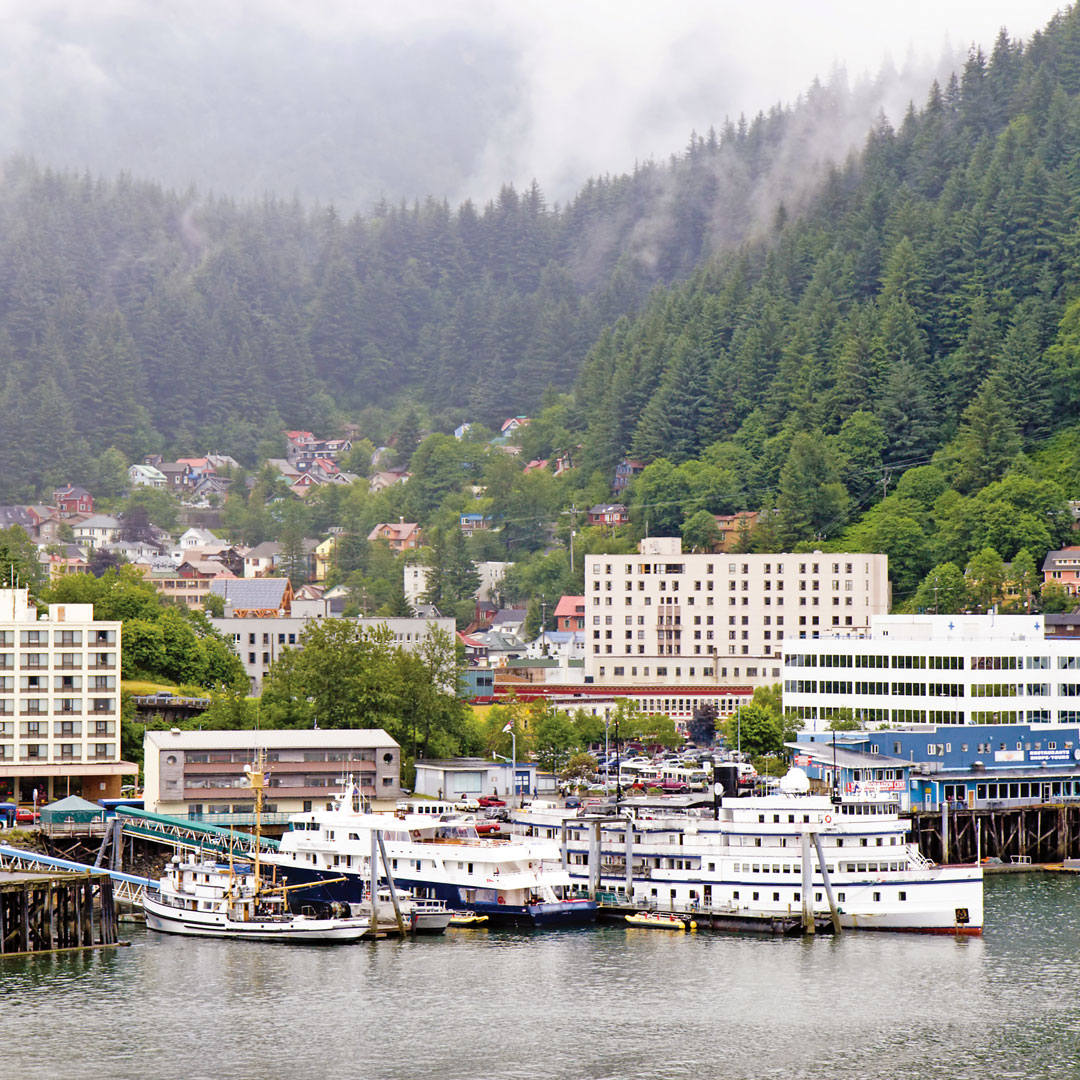Planning an Alaskan Vacation: Where and When to Go
What are the first things that come to mind when you think of Alaska? Steep-walled fjords, charismatic bears, soaring eagles, breaching whales, or glaciers creeping down the side of a mountain and into the sea? Then you’re already in tune with some of our state’s grandest sights. But there’s so much to Alaska that it can’t possibly be summed up in just one image—and every part of the state is a little bit different. Get started planning an Alaskan vacation with the tips below.

Where to Go
Juneau and Southeast Alaska
The lush, temperate rainforest and mild climate of Southeast Alaska’s island communities turn outdoor excursions into Jurassic Park-style adventures. With waters rich for fishing and whale watching, and tall trees perfect for ziplining, it’s wildly popular with both cruise ship passengers and independent travelers, who make use of the ferry system and convenient connections via plane. Juneau is not only the transit hub, but also the state capital and gateway to Glacier Bay National Park, where the wildlife outnumbers the people. Other popular stops include Ketchikan, with its rich mix of Alaska Native cultures, Skagway, which is all about the Klondike Gold Rush, Sitka, which exhibits the influence of Russian settlers, and authentic fishing towns like Wrangell and Petersburg.
Anchorage and Southcentral Alaska
With a population of about 300,000, Anchorage contains almost half the state’s population and offers a breadth of urban amenities. Go kayaking, hiking, or even flightseeing by day then enjoy big-city comforts by night. If you want the greatest range of Alaska experiences in the shortest time, this is the place to be—a launch pad for trips south along the Kenai Peninsula, north into the Matanuska-Susitna Valley, or east into the spectacular fjords of Prince William Sound. Choose from seaside towns like historic Valdez, which has survived both the Great Earthquake of 1964 and the Exxon Valdez; Hope, where hiking and mountain biking await; the cruise port of Seward, the fishing meccas Kenai and Soldotna, and Homer, renowned for its thriving art scene.
Denali, Fairbanks, and the Interior
If you want the most varied wildlife-watching, head for Denali National Park. You may see Dall sheep, mountain goats, wolves, and maybe even bears here in its wide swaths of untouched wilderness, centered around the highest peak in North America. Fairbanks is a fascinating mix of natural history and culture, with everything from Athabascan fiddling and a chance to roam with reindeer. But the busy season is winter, when droves come to see the northern lights and quintessentially Alaskan activities like dog mushing and ice art.
Kodiak and Southwest Alaska
Southwest Alaska’s communities are small and remote—so they’re perfect for watching wildlife. Alaska’s “Emerald Isle,” Kodiak is popular for bear-viewing tours to nearby Katmai National Park; it also has a rich Alaska Native heritage. Farther west, Dillingham offers unparalleled fishing at the head of the world’s most famous salmon fishery, Bristol Bay. The lush islands of Dutch Harbor/Unalaska are a birder and eco-tourist’s paradise. The Pribilof Islands contain some of the state’s richest coastline, dotted with colonies of walruses, seals, and seabirds.
The Arctic
In the Arctic Circle, the sun really does vanish for a while in the winter then returns to provide 24-hour light during the summer. This creates an unbelievably lush, short-lived ecosystem. This is also the only part of Alaska where you’ll encounter polar bears. Remote Arctic communities can be reached only by small plane and preserve deeply rooted indigenous traditions.

When to Go
High and Low Seasons
High season for most of the state is mid-June through early September. (In Southeast Alaska, high season starts in May and ends in late September. Southeast’s shoulder seasons are April and October.) You’ll have the best weather, the richest landscape, most touring and wildlife-viewing opportunities, and the most services available in high seasons—along with the highest prices. July and August are the best months for salmon fishing.
Save money—and still have a great time—during the shoulder seasons (May and September). May is the best time for birding trips. You’ll have few to no salmon-fishing options, but halibut fishing is good. In Southcentral and Interior Alaska, spring may not start as early as May, but the rainforests of Southeast are always green.
In Fairbanks, the high season is actually winter, when tourists arrive to watch the aurora borealis. The Iditarod sled dog race that ends in Nome, draws visitors from all over the world.
Advance Reservations
Book at least six months ahead for high season lodgings in your price range. If you’re aiming for a high-demand lodging, a very small community like Haines, or an annual event like the Iditarod or salmon fishing in July, plan a year in advance. The most spectacular wildlife-viewing opportunities, such as visiting the Walrus Islands State Game Sanctuary, require you to secure a permit that may sell out nine or more months in advance.
If you’re planning to bring a car on the Alaska state ferry system or want a cabin berth, book as early as possible—six months or more in advance. Last-minute walk-on spots are almost always available.

Related Travel Guide
Pin For Later
